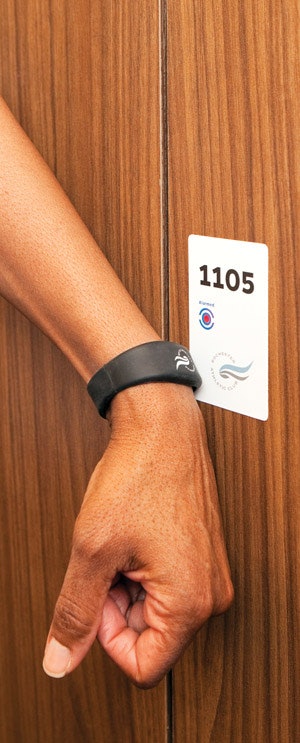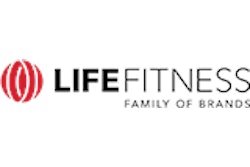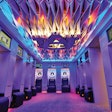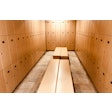![[Photo courtsey of Ojmar]](https://img.athleticbusiness.com/files/base/abmedia/all/image/2016/07/ab.Lockers716_feat.png?auto=format%2Ccompress&q=70&w=400)
This article appeared in the July/August issue of Athletic Business. Athletic Business is a free magazine for professionals in the athletic, fitness and recreation industry. Click here to subscribe.
What do facility managers complain about when it comes to lockers? Dealing with lost keys, forgotten pins, theft, and tracking which users are using which lockers. Responding to these complaints, major lock manufacturers have debuted locks that utilize wireless communication and software or apps to better control and track locker access.
"Technology-based systems represent the evolution of mechanical security into electronic solutions that deliver a new level of efficiency, accessibility and control," says Cris Smyczek, senior product manager for Master Lock Company, which recently debuted a Bluetooth-enabled Smart Padlock that can be unlocked with a user's smartphone. After a user registers the locker, it can be opened via phone or with a directional code. The user can also create temporary access codes and share them with others, or get alerts when his or her locker is accessed.
Bluetooth is one wireless-communication option; RFID (Radio-Frequency Identification) systems are the most well-known, and NFC (Near-Field Communication) technology is the newest. "We have had RFID tech in our products for some time," says Julie Advocate, vice president and CFO with electronic lock manufacturer Digilock. "What has changed is that we're introducing the ability to manage the locks with a mobile app."
EXPANDING ACCESS
At their most basic, wireless-communication lock systems provide locker access and track use. For operators looking to integrate locks into a facility-wide management system, however, the sky's the limit. "Integration has been a strong trend in the U.S. market," says James Oonk, North America sales director for locking solutions provider Ojmar. "You have one device — a key fob, chip card, bracelet — you issue to your members. They can use it for front door or front desk access. Once inside the facility, you can give or restrict access to various areas depending on their membership. You can also use that device for a cashless payment system — instead of bringing money, a membership ID or a license, people wear that bracelet when they go up to the smoothie bar and just scan it. It pulls up the member's profile to verify the information or face matches."
The data tracking also offers a greater level of security, allowing facility operators to track a lock's history. "The mobile app can let the facility owner know whether a locker was used only by that user or if there's a reason something went missing," says Advocate. "It's that extra level of security."
In addition, major fitness equipment manufacturers such as Technogym, Precor, Life Fitness and Matrix have integrated RFID tech into their equipment, allowing users to quickly pull up workout data with the same device that unlocks their locker.
For facilities that don't need access control or point-of-sale integration, simple RFID locks are still an option. Ojmar offers an integrated RFID system and a basic lock. "It's just a basic open and close, no custom programming," Oonk says. "A lot of facilities want to integrate their lock but don't need all the customization."
Improving operations
Facility owners and managers might find the technology and the information it supplies even more beneficial. "We can set up the system such that a person would have to check in before they could use a locker or are able to make a purchase," says Alana Martin, business development associate with Gantner Technologies. "When a member checks in, there's a validation date written into their ID, and then the lock checks that that member is validated to use a locker on that day."
Facility operators are given more control over who's using lockers and how, an important tool for facilities with limited locker space. "You can program locks to automatically unlock at a certain time of day or after so many hours," Advocate says. "If the facility wants to make sure all lockers are unlocked and ready for the next day, they can set the locks to do that."
Most systems can also be set up to easily accommodate both rental and shared-use operation. "You can see in the locker management software that there are different modes — locker rental for six months, for example," Martin says. "After that period of time, the system would automatically block that person from having access."
Helping members who have forgotten which locker is theirs becomes easier, as well. Gantner and Ojmar both offer info terminals that members can use to pull up the locker associated with their ID, though Oonk recommends limiting use of the technology to facility staff to prevent users from trying to use credentials that aren't theirs. "If someone does forget their locker, an attendant can scan that key and verify that this person should have that key."
Integrated lock technology gives operators a better understanding of how their locker rooms are used. "There are statistics that we can provide with our networked locking system on what time of day the lockers are being used," says Martin. "We can show which lockers are in use at any given moment and which are not."
Having this information allows facility operators to make more efficient use of space. "Maybe there's a certain section of lockers that's underutilized and you can find out why and make better use of that," Oonk says. "Or if your lockers are at 90 percent capacity for 12 or 14 hours of the day, maybe you need to add a bank of community lockers outside of the locker rooms."
More from AB: How Lock Technologies Are Simplifying Shared-Use Operations
Who's using integrated locks?
Wireless locking technology is still in the early-adopter stage in the United States, with initial interest coming largely from high-end clubs looking to add to their list of member amenities. "A locker costs $100," Oonk estimates. "If you put your own lock on it, it's going to cost $5. When you go to RFID, that's a $120 lock on a $100 locker. That's one of the reasons that there has to be a good value statement and reasoning behind it."
RELATED: PRODUCT SPOTLIGHT: Locker Room | Laundry Components
"It became clear a couple of years ago that it was the high-end facilities looking to differentiate themselves with a unique technology experience for their members," Martin says, noting that the other end of the spectrum is getting on board, as well, with value-priced club chains looking to eliminate or minimize staffing seeing the potential of a networked facility access system.
RFID lock technology is already commonplace in European facilities, where people are used to using an ID card to access public transportation and other public services. Likewise, areas where RFID technology is already being used are poised for a smooth transition. "Our biggest markets are corporate locker rooms, medical fitness with wellness centers attached and universities," Oonk says. "These facilities are already using keyless smart cards and entry systems."
It's only a matter of time before the technology becomes more affordable, and thus more appealing to a wider range of users, says Oonk. "The touchscreen technology on our phones has been around for 20 some years. It's old technology but it was wickedly expensive. As technology gets cheaper, the cost of those products gets cheaper, which allows for a much broader market use."
![[Photo courtsey of Digilock]](https://img.athleticbusiness.com/files/base/abmedia/all/image/2016/07/ab.digilock_side_300x202.png?auto=format%2Ccompress&fit=max&q=70&w=400) [Photo courtsey of Digilock]
[Photo courtsey of Digilock]
Bracelet, card, phone or PIN?
Wireless access comes with a variety of options for accessing a locker, all to suit the preference of the facility and its users. "We expect that there's always going to be a mix of different kinds of credentials," Gantner Technology's Alana Martin says. "Some want hands-free, others don't want to have something on their wrist."
![[Photo courtsey of Gantner]](https://img.athleticbusiness.com/files/base/abmedia/all/image/2016/07/ab.GatWriter_Card_300x200.png?auto=format%2Ccompress&fit=max&q=70&w=400) [Photo courtsey of Gantner]
[Photo courtsey of Gantner]
There are also members who will prefer having a lock or a PIN, just because of the familiarity of use, says Digilock's Julie Advocate. "Unlike 15 years ago, when the idea of a PIN code was foreign, it's more readily accepted," she says. "When you run into trouble is when members can't remember the code they used to lock their locker. ![[Photo courtsey of Gantner]](https://img.athleticbusiness.com/files/base/abmedia/all/image/2016/07/ab.NF_Precor_Wristband_300x200.png?auto=format%2Ccompress&fit=max&q=70&w=400) [Photo courtsey of Gantner]
[Photo courtsey of Gantner]
This article originally appeared in the July/August 2016 issue of Athletic Business with the title "Talk to me: The future of lock technology"





































